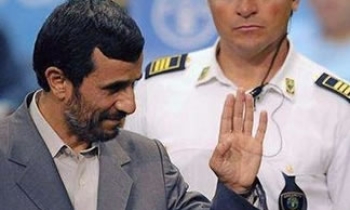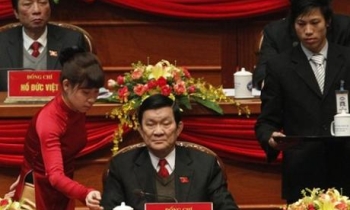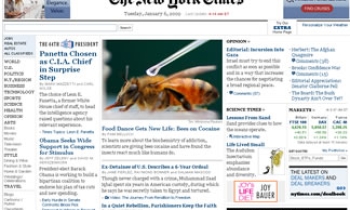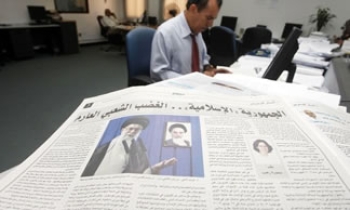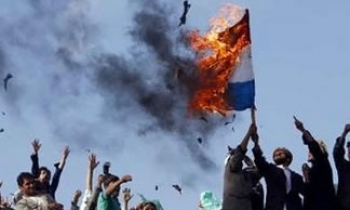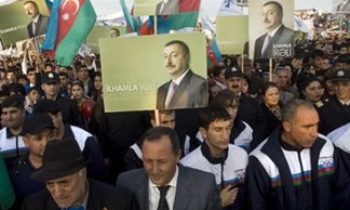After decades of stagnation, the print media business in Mumbai is getting a serious makeover. Along with monsoon downpours, a slew of Indian and foreign publications are showering down on India's financial capital and the country's richest media market, with English news daily behemoth Times of India facing a messy turf war that could make for a nice Bollywood potboiler.
In the shakeup, long-suffering media hacks are landing record salaries (reports abound of 100-300% hikes), mid-level editorial staff are getting out-of-turn promotions to fill the gaps left in the wake of busy headhunters, bullied advertisers are suddenly confronting unprecedented options, and Mumbai readers can hardly believe their luck.
Leading the feisty challenge to dethrone the Times of India (TOI) is Daily News and Analysis (DNA), a English-language daily launched as a joint venture between Zee, the largest Hindi satellite TV network, and Dainik Bhaskar, a leading Hindi daily that's part of the US$391 million Bhaskar Group. DNA, with a massive door-to-door marketing campaign (involving 1,500 young data collectors) plans a mid-July launch. Entering the market about the same time is the Hindustan Times, the New Delhi-based major, bringing its bitter turf war with TOI in Delhi to the enemy's den in Mumbai.
In a steamier sub-plot, the Times of India is in a running battle with Mid-Day, the highest-circulation tabloid in Mumbai. Mid-Day launched a morning edition to eat into TOI's plate and TOI has responded with a new tabloid, Mumbai Mirror, to give Mid-Day a knock. Agencyfaqs!, a media analyst, however, feels that Mumbai Mirror has flopped, serving a lesson in how hard it is for a newcomer to grab the Mumbai reader's attention.
The surging activity has not escaped overseas eyes. On Sunday, Tony O'Reilly, the chief executive of Independent News & Media (a leading international media and communications group), was quoted in the International Herald Tribune calling the Indian market "the new theater of strategic investment". The Indian government had allowed him to buy a 26% stake in a leading newspaper group, Jagran Prakashan, for $36 million. The same article quoted an investment banker as saying that the foreign stake in Indian media had climbed to $300 million in the last 18 months, with another $250 million expected soon.
The much-debated foreign direct investment (FDI) in the mostly family-owned Indian media has cracked open, with the Indian government allowing a 26% ceiling. In June 2004, Dow Jones partnered with Bennett & Coleman to publish the Asian Wall Street Journal; Pearson's Financial Times invested about $3 million for nearly 14% of Business Standard, India's second-biggest business newspaper; and Henderson Private Capital's Asia Fund, a private equity fund, recently pumped in $20 million for a stake in Hindustan Times.
Media stocks such as the software magazine business Cyber Media India and the South Indian newspaper giant Deccan Chronicle are currently making impressive inroads in the National Stock Exchange (NSE). In the recent bull-run in Indian bourses, Deccan Chronicle's share price shot up by 14%, encouraging more players to tap the markets for funds.
"A lot of changes are happening, and happening for the good," Amy Fernades, the new editor of Femina told Asia Times Online. Femina - India's oldest women's magazine in English, and originally part of the Times of India stable - was taken over by BBC in a 50-50 ownership arrangement with Bennett & Coleman, the owner of Femina, Times of India and Economic Times. The new company, World Wide News, operating from a swanky green-themed office in the Times of India building in uptown Mumbai, runs two other magazines apart from Femina. Fernandes got the job after DNA poached Femina's last editor, Sathya Saran. "We have 40% of the top editorial talent in Mumbai," crowed a senior corporate communications manager from Zee.
The plot thickened when Pradeep Guha joined DNA as the chief executive officer. Guha is the marketing whiz kid who turned the Times of India from a dowdy daily sneered at as the "Old Lady of Boribunder" to a racy, semi-tabloid daily that has come to be ruled by marketing bosses who tell editors what to print, besides flirting with the naughty side of media ethics (see Dirty laundry at the Times of India, May 18, 2004). Guha was hired by DNA for a reportedly record sum by Subhash Chandra, owner of Zee, and is now hatching schemes to give his former employers a run for their money.
Advertising agency heads, cautiously watching and waiting, are happily witnessing the unfolding script. "We are definitely going to get better deals thanks to the fierce competition among Times of India, DNA and Hindustan Times," Abhijit Bannerjee, owner of Wavelength Communications, told Asia Times Online. A DNA sales team had visited him earlier in the day, promising a 40-page daily color edition with a 300,000 initial print run, about half the 600,000-plus print run of TOI. "TOI does not cut ad rates (a full-page black-and-white ad costs about $40,000), but they will have to give more add-ons. The most important development is that the Times of India monopoly is being broken."
Local senior media professionals wonder how much the new shake-up would result in quality journalism and increased readership. "Trainees have been suddenly inducted with fat salaries," pointed out Smruti Koppikar, award winning journalist and Mumbai bureau chief of the leading news weekly Outlook. "Also, unless readership increases the new dailies too will all be eating into the same pie."
Another critical factor in the new media war is how much TOI has dipped in popularity ratings. "Most of my friends want an alternative to TOI," said Ralph Pais, a media veteran for 30 years. "TOI seems to persist in thinking that showing women's cleavage will boost circulation." Invaders are banking on this apparent insult to local intelligence. Vir Sanghvi, editorial director of Hindustan Times, boomed to an interviewer: "Readers in India's most prosperous, cosmopolitan and modern city - and the city I grew up in - are tired of being taken for granted and treated like morons."
But other media pundits gloomily point to a dark side of this sudden burst of media activity. "I hope the media explosion does not go the way of the tragic dot-com boom," wrote Chandan Mitra, of the Pioneer, a New Delhi-based English daily that once entered Mumbai and beat a quick retreat. "I would hate to see hundreds of journalists rendered jobless, begging to get back their old jobs even at drastically reduced salaries." The next year or two will tell.

